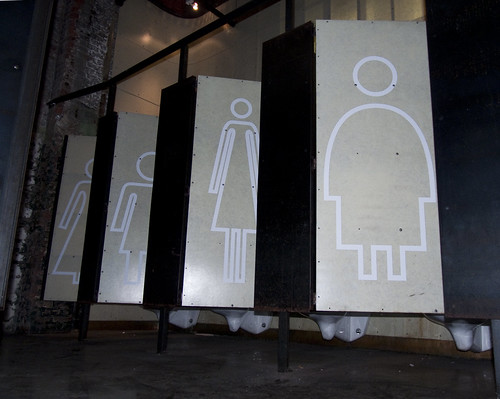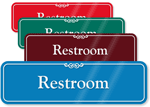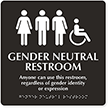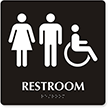What’s stopping the spread of gender-neutral restrooms?
While states implement laws to incorporate gender-neutrality in terms of employment and extend support to the LGBTQIA (Lesbian, Gay, Bisexual, Transgender, Questioning, Intersex and Asexual) community, there are some inequality issues in the public domain that still need to be addressed — for instance, the restroom choice.
Conservatives think making restrooms gender-neutral allows sexual predators free access to women’s restrooms. Inaccurately called the “bathroom bill,” opponents fuel fears of privacy violations. They think the law, prohibiting discrimination in public facilities, will be exploited by people to sexually harass the opposite sex.

“Who are you”? Restroom installation at the Boston Center for the Arts, MA. From weeklydig.
LGBT hate groups fabricate stories
This fear, which has been debunked as a myth by several experts, was magnified into higher proportions last year when the media promoted news about a transgender male student harassing female students in a school restroom. The story was picked up by several high-profile news channels, until it was proven to be entirely fabricated by conservative anti-LGBT hate group Pacific Justice Institute (PJI). Several, similar stories reached the media, hampering the fight for restroom equality.
A report for The Transadvocate, Cristan Williams, talks about this trend. “PJI was only able to do what it did with the help of a credulous media that’s ready and willing to print — without question — whatever ludicrous anti-trans claim these anti-LGBT groups come up with. It’s a huge problem that does destroy lives.”
Experts quash stories of threats in gender-neutral restrooms
A report by Media Matters collates opinions from 15 experts who unanimously quash the popular theory that trans people are a threat in public, gender-neutral restrooms as baseless and “beyond specious.” The expert group from 12 states includes law enforcement officials, government employees, and advocates for victims of sexual assault.
In reality, trans people run a higher risk of being attacked in a restroom. Those in the middle of a transition, those who do not transition by choice, those who cannot afford transition, genderqueer, and those who do not live as either male or female are at the highest risk for attack. These people don’t identify with the socially-accepted societal genders and may fear using either single-gender restroom.
State government and colleges lead the way in creating gender-neutral restrooms
Last year, Philadelphia introduced a pro-LGBT bill that was touted as “the next iteration of civil rights and freedom in the United States.” The bill aims to provide equal rights to the trans community and Mayor Michael Nutter hopes that with this new law, Philadelphia might become “the most LGBT-friendly” city in the world. As part of the new legislation, new or renovated city-owned buildings are required to include gender-neutral bathrooms in addition to traditional men and women’s restrooms.
In a positive response to transgender students’ complaints of harassment or discrimination, more than 150 colleges and universities have created gender-neutral bathrooms on campus.
Whether to construct each restroom separately on the basis of socially accepted genders, or to create one restroom that is open for all, is still under debate. Some universities have taken the middle ground, and have built another gender-neutral restroom apart from the already existing gender-segregated ones.
Category: Restrooms














